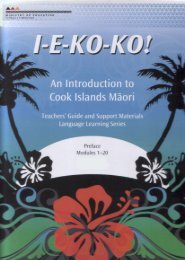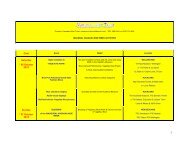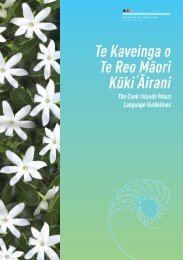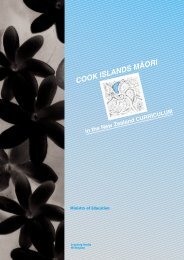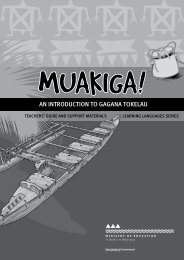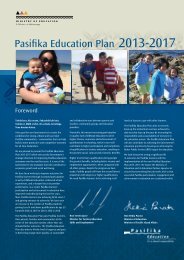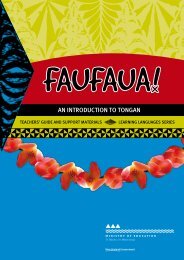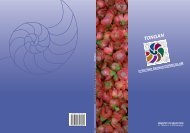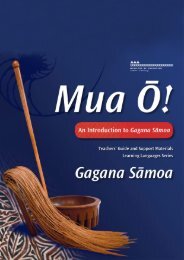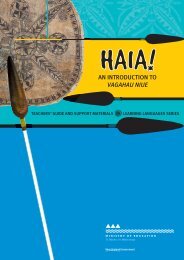Ta'iala mo le Gagana SÄmoa - Pasifika Education Community
Ta'iala mo le Gagana SÄmoa - Pasifika Education Community
Ta'iala mo le Gagana SÄmoa - Pasifika Education Community
Create successful ePaper yourself
Turn your PDF publications into a flip-book with our unique Google optimized e-Paper software.
• writing short texts, such as email messages and lists;• reading and writing short descriptions of familiar peop<strong>le</strong> and objects;• carrying out a survey, for examp<strong>le</strong>, finding out peop<strong>le</strong>’s ages, likes and dislikes, and wherethey live, and then plotting this information on a chart;• preparing interview questions on a particular theme, for examp<strong>le</strong>, family;• filling in a form with personal information, then swapping forms with a classmate andsummarising each other’s information;• reassembling the text of a song or story as they listen to it being sung or retold;• constructing a simp<strong>le</strong> timetab<strong>le</strong> or itinerary, then having a classmate ask questions in orderto enter the information on a blank form;• writing simp<strong>le</strong> sentences that describe someone performing actions (after viewing the performance);• labelling pictures in order to explain relationships, for examp<strong>le</strong>, between the speaker andtheir father, <strong>mo</strong>ther, sister, and pet.<strong>Gagana</strong> va‘aia: Mai<strong>mo</strong>aina ma <strong>le</strong> fa‘atinogaVisual language: Viewing and presenting or performingStudents could be <strong>le</strong>arning through:54• observing greetings, introductions, and <strong>le</strong>ave-taking in different contexts (for examp<strong>le</strong>, on digitalmedia) and taking turns to ro<strong>le</strong>-play;• creating an appropriate greetings card or item for a birthday or festival;• viewing aspects of aganu‘u fa‘asā<strong>mo</strong>a and discussing what they see in relation to theirown culture(s);• performing a cultural item, for examp<strong>le</strong>, pese, sāsā, or fa‘ataupati;• matching pictures, <strong>mo</strong>vie scenes, or dance <strong>mo</strong>vements with words or short descriptions;• producing their own version of a song, dance, or poem using another medium;• ro<strong>le</strong>-playing a situation that they have observed (on digital media or at a cultural event)and then discussing aspects of the performance;• identifying patterns of behaviour in what they observe and de<strong>mo</strong>nstrating that they understandthe significance of those patterns of behaviour in particular contexts, for examp<strong>le</strong>, understandingthat in formal Sa<strong>mo</strong>an contexts there will be a formal b<strong>le</strong>ssing of the food before eating.For classroom language <strong>le</strong>arning activities to be effective in pro<strong>mo</strong>ting <strong>le</strong>arning, teachers needto consistently <strong>mo</strong>nitor their students’ progress, provide quality feedback, and offer guidance asstudents make progress in achieving the objectives. Effective teachers encourage their students to<strong>mo</strong>nitor their own progress and to develop effective <strong>le</strong>arning strategies.All activities need to be designed with the goal of communication in mind, because theCommunication strand specifies the objectives that students are to achieve at each <strong>le</strong>vel.See earlier sections (pages 19–22) and refer also to The New Zealand Curriculum for furtherinformation on Effective Pedagogy (pages 34–36) and Assessment (pages 39–41).



